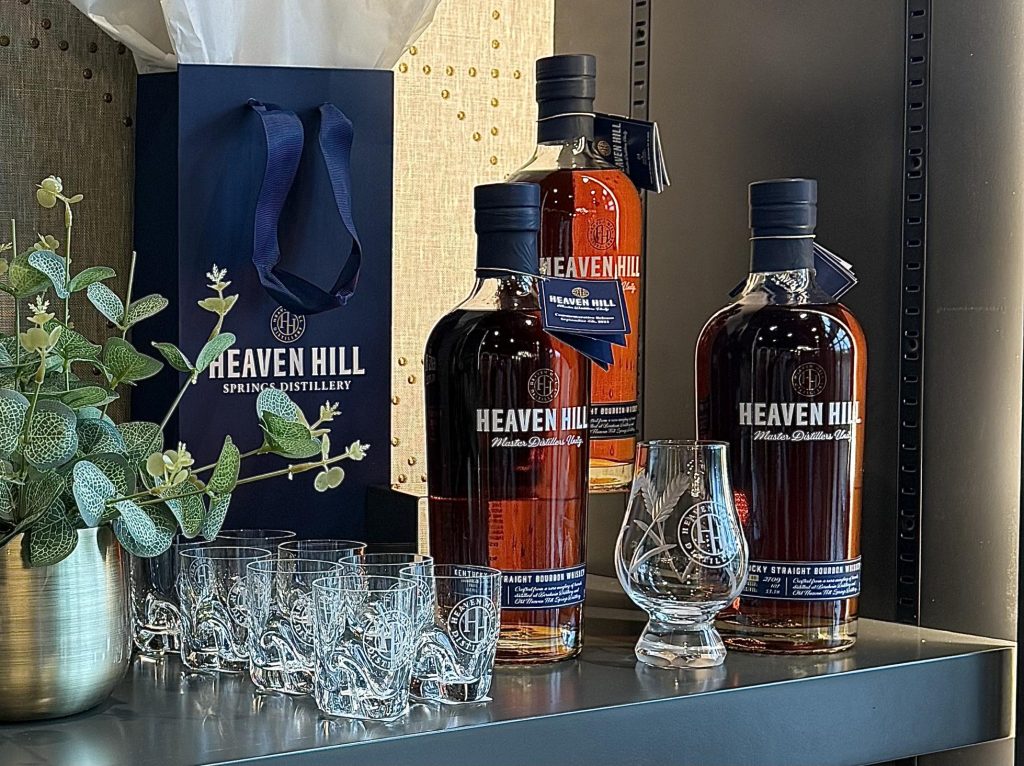The 1990s were a pretty dark time in general for the bourbon industry, which by then had been losing ground to vodka and tequila, among other spirits, for decades. The darkest day, without a doubt, was November 7, 1996. A severe storm rolled into Bardstown, Kentucky, bringing with it rain, lightning, and near-hurricane force winds. It’s suspected that a lightning strike ignited one of the warehouses at the Heaven Hill whiskey distillery. The rain, along with a phalanx of firefighters, wasn’t enough to stop the inferno that resulted. By the next day the distillery was destroyed, as well as seven warehouses which had held about 15% of Heaven Hill’s supply of aging whiskey — about 2% of the entire world’s total stocks. The loss was estimated at about $30 million at the time, but to whiskey enthusiasts then and now it was incalculable.
Fast forward a mere 29 years or so, and Heaven Hill has at last made its triumphant return to Bardstown with its new, enormous, state-of-the-art Heaven Hill Springs Distillery. It can currently turn out 1,500 barrels a day, with room to triple that capacity. It’s once again a challenging time for the industry, with trade wars and downturns in consumption and widespread fears that Gen Z will be the first generation in thousands of years of recorded history to eschew drinking entirely. Fortunately, Heaven Hill is a privately owned company — in fact, it’s been owned by the same family since its founding in 1935 — and thus isn’t beholden to panicky shareholders who need it to be profitable immediately.
To commemorate the occasion, Heaven Hill has bottled a whiskey that could be made by no other distillery, and can’t even be replicated by Heaven Hill itself. Heaven Hill Master Distillers Unity, as it’s called, contains what’s said to be the last surviving barrel from the old Bardstown distillery (the last one in Heaven Hill’s possession, at any rate), laid down by the legendary Parker Beam in 1991. Beam, who was a member of that Beam family — not all Beams work at Jim Beam — was with Heaven Hill from 1960 until his death in 2017, ascending to master distiller status in 1975.
The three other bourbons in the blend, which is bottled at 107 proof — the entry proof for whiskeys at the old Heaven Hill distillery — are a 14 year old, also laid down by Beam; an 8 year old distilled by his successor, Denny Potter; and a 6 year old laid down by the current master distiller, Conor O’Driscoll. All the younger whiskeys were distilled at Heaven Hill’s Bernheim distillery, which was acquired from Diageo in 1999 in the wake of the Bardstown fire, and they all employ the standard Heaven Hill mashbill of 78% corn, 12% malted barley, and 10% rye.
A lot of history went into the 4,000 bottles of Master Distillers Unity that were produced — so much so that, for many collectors, it might make sense to let theirs gather dust on the shelf and watch its value steadily increase. But those poor souls would be missing out on a terrific whiskey that really deserves to be enjoyed. I don’t know how much (or how little) 34-year-old bourbon is in the blend, but there are no harsh tannins or astringency that would be expected from a bourbon of that age. It’s beautifully balanced — sweet and chewy, silky on the tongue, with notes of rich butterscotch, walnuts, milk chocolate, and oaky spice on the finish.
It’s a very easy, quaffable bourbon, which some may consider a problem given how little of it is out there. In fact, the only place you can get it is in Bardstown at the new distillery, where it’ll run you a cool $225, airfare or carfare not included. But since the distillery boasts a visitors’ center and a bar, at least you can make a day of it after you’ve bought your bottle.

